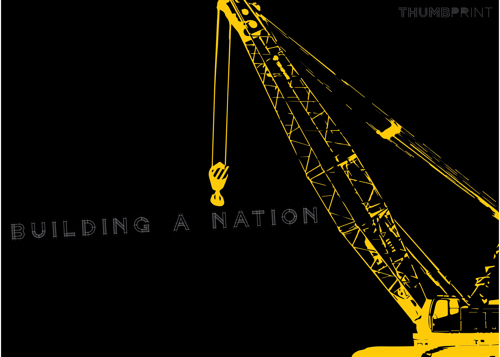Article in brief: What does it take to be a thriving cultural, economic and manufacturing hub? Money? Land? People? Yes, to a certain extent. In this article, Omar Al Owais explores an additional factor.

I pity the blind in Granada; says Francesco Alarcon De La Casa. I visited Spain twice, and I couldn’t agree more with him. The charm of the Andalusians can be seen all around Spain.
I recall the Alhambra Palace, mighty in its red façade, which was built back in the 15th century. I recall entering a room in which a whisper into a hole in one corner can be heard from the opposite corner. The gardens, majestic and enchanting, took me back to the 15th century, when they were built.
Why were they able to build all that you may ask? Tolerance.
“As early as the Ninth century, Andalusia had become one of the wonders of the world. The Arabs, who arrived on Spanish shores in 711, set to the task, in the following century, of building an urban-based society, modeled on the example of Baghdad, the “city of peace,” which, built from scratch in 762, was to become a thriving center of industry, agriculture, trade, science, and the arts, whose influence radiated out to the East as far as India and China.” – Muriel Mirack Weissbach[1]
Under ’Abd al Rahman II (822-852), Andalusia had grown to support a population of 30 million, who lived in hundreds of cities, manufacturing centers where textiles were produced, and trade and education flourished. The capital city, Cordoba, was the largest city in the West, with 130,000 households within its walls, 3,000 mosques, and 28 suburbs, with villas, palaces, and splendid gardens.
Innovation was encouraged in the field of agriculture, and the incentives placed assured that the Empire would flourish in this field. Farmers who took advantage of irrigation techniques only had to pay 5% rather than 10% of their yield in tax. Dams, irrigation canals and pumps had productivity levels that greatly exceeded those of Northern Europe for centuries to come.
An empire of this scale could not have risen without the tool of education, which it rightly implemented. Learning transitioned from halaqas (gatherings where the prophet informed his followers of the new faith) into elementary education in reading, writing, arithmetic and the Quran in mosques under Ulama (learned men). Eventually, under the Andalusian rule in the 9th century, mosque schools were developed into universities, the first in Europe, attracting students from all religions and nationalities indiscriminately. Muriel Mirack Weissbach reports:
“Two courts of Christian princes are exemplary of the rich dialogue that ensued with Islamic Spain, those of Alfonso, the Wise, and Frederick II Hohenstaufen of Palermo. In Ninth-century Andalusia, Arabic was the universal language, also among the Christians.”[2]
Hakem II built 27 schools in Cordoba for children of poor families. It was reported that Cordoba alone housed as many as 800 schools. Gustav Diercks, a German philologist stated that:
“There were even in the smallest villages, public schools and schools for the poor in such numbers, that one has good reason to assume that under Hakem II (916-976) at least in the province of Cordoba, no one was ignorant of reading and writing.”[3]
In my opinion, the army of 10,000 could not have expanded their captured land had it not been for religious tolerance. Society was allowed to progress, because forced conversions were non-existent; as they are in the 21st century. Society was allowed to progress because religious persecution was non-existent. The Jews were not forced to retreat into ghettos, as was practiced in Europe at that time. Elmer Bendiner states “There was thus no pressure on Jews in tenth-century Andalusia to retire into a ghetto. There were no laws and scarcely any customs that confined Jews to any place or occupation. When their gates were shut they were the ones who shut them.” According to the Jewish Encyclopedia, as a result of the oppression of the Fatimite caliphate, the Jews settled in Andalusia. Under Abdurrahman III, the Jews were successful in their trade of silk and various industries, which thus contributed to the prosperity of his empire. Additionally, due to his lenience, the bilingual Jews greatly assisted in the improvement of science in the kingdom. [4]
Natural and human resources, economic prowess and geographical location all contribute to the success of a nation. However, even with the existence of these factors, without a tolerant and indiscriminate society, it is bound to fail. All individuals possess the talent to move their nation forward, despite their ethnicity or religions. To move forward, we must be judged on what we do with our talent, rather than on our ethnicities.
With the help of tolerance, marvels will happen. With the help of tolerance, peace can be attained. With the help of tolerance, civilizations such as Andalusia will rise. For that, I pity the blind in Granada.
References:



